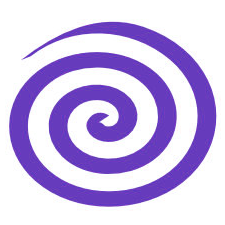The Two Dragons: Ericksonian Hypnotherapy in the World’s First Life-Saving Face Transplant By Marta Nowak-Kulpa, Dipl. Psych.
The Milton H. Erickson Foundation Newletter Case Report Vol. 43 #3
The Two Dragons: Ericksonian Hypnotherapy in the World’s First Life-Saving Face Transplant
By Marta Nowak-Kulpa, Dipl. Psych.
Marta Nowak-Kulpa has a private psychotherapy practice and works in the Maria Sklodowska-Curie Memorial Cancer Center and Institute of On- cology in Gliwice, Poland. In the Oncologic and Reconstructive Surgery Clinic, she is a member of the facial transplant team, helping patients admit- ted for surgery.
On May 15, 2013, at the Oncologic and Reconstructive Surgery Clinic, an entire face was transplanted for the first time onto a male patient, Grzegorz (aged 33), after he lost his nose, jaw, and cheeks in a machine accident at work. An im- mediate face replantation with the patient’s own face was unsuccessful and left an open area close to the brain exposed to infections.
But three weeks after the accident, the life-saving face replantation surgery, directed by Professor Adam Maciejewski, took place because a donor face had become available.
After surgery, the patient’s rehabilitation program began. I provided effective Ericksonian therapy, which included hypnotic, story-based, metaphorical con- versation. This gradually led to improved vital signs, respiration, and muscle and nerve strength, and Grzegorz demonstrating normal vital activities.
The Therapy:
When the patient awoke from surgery he couldn’t speak or see and didn’t know where he was. The first time I saw him, his face was completely bandaged, and he was tied to the bed trembling and rapidly breathing.
I was as nervous as he was, but I learned how to calm myself so that I might also calm him. I said, “My job is to stay here with you, and I will do my job. And you will do your job at the same time. I will stay here, and you will stay in bed.”
“You can breathe as you wish, and I am breathing as I like. Just like that. I can breathe as slowly as I need to calm down and feel better...and you can also do this.”
“Just like that ... You know how to calm down because you have done it many times.
It’s easy if you remember how to do it. ... Just like that.”
“Everyone here is taking care of you. It is after surgery. Everything is fine. Just like that.”
Intensive care monitors showed me that the patient’s breathing had become regular and deep. His heartbeat slowed. The trembling ceased and calm resumed. We met every day, twice a day, for two weeks. Then, during his rehabilitation pe- riod, we met daily. I was one of the few people he saw.
I saw a dragon tattoo on his arm, so I told him the story of the two dragons (in Welch mythology it is called The Tale of Two Dragons) many times, piece by piece, gradually adding new parts gathered from our conversations.
Here is part of what I told him:
I will tell you something you can remember before you fall asleep, but you may well not remember it. In any case, you may need a piece of what it was. And it was a long time ago.
At that time, the dragon clans decided to connect. Supporters said that to- gether they would create a large, safe family where all the neighbors would be like brothers.
The critics noticed that along with the young and healthy ones, the old and sick dragons would join the herd. Who will take care of them? they grumbled. The argument would last a long time. But there were people in the area who started to hunt us. We had to connect to survive.
It turned out that the ones some considered weak were helping everyone in a completely unexpected way. Thanks to their experience, they advised us how to effectively defend against the new threat. Many wounded dragons knew heal- ing ways and herbs to heal our wounds. By allowing all the dragons to become involved, we were able to receive power from all of them.
The younger dragon listened attentively and sank more and more into the story of the victorious battle.
Commentary
By Eric Greenleaf PhD
The old navigation maps for sailors had large, unknown areas marked, Hic Dragones, “Here be Dragons.” Marta Nowak-Kulpa’s marvelous work helped bring a new face to a terrified and terribly disfigured young man, utilizing the very unknown territory he had to travel to survive and recover.
Immediate, caring hypnotic therapy helped this defaced man face the chal- lenges in his life by using conscious and unconscious resources. Milton Erick- son, asked by a researcher, “What is hypnosis?” replied, “Hypnosis is the stimulation of love in one person by the love in another.” (Zeig, An Epic Life,” Vol. 1, 2022)
